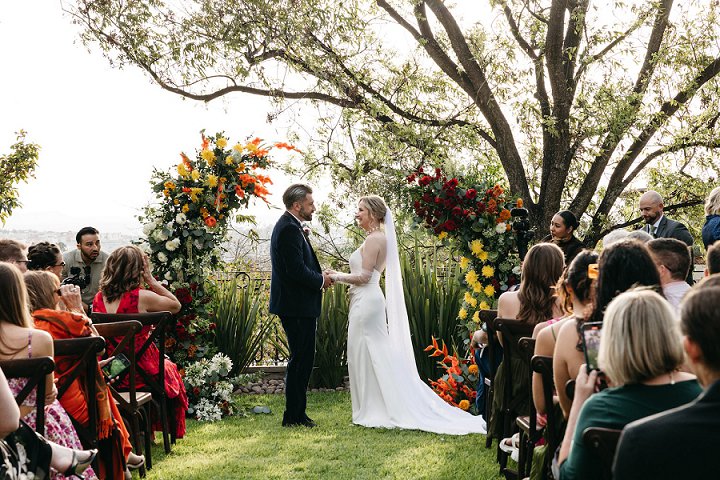Featured Post

Olga and Jim’s ‘Ukraine meets Mexico’ Cosy and Welcoming Outdoor Wedding in San Miguel
Today I am taking you to gorgeous Mexico for the beautiful wedding of Olga and...
28
Nov
2025
Planning a wedding requires structure, discipline, and clarity. You deal with vendors, timelines, and financial decisions. Strong planning keeps you steady. The outline below guides you through a simple system that helps you reduce confusion and protect your budget.

Every wedding has limits. You need to know where your money goes first. Start by choosing three elements that matter most to you. Many couples choose the venue, photography, and food. Others focus on guest experience or music. Pick what supports your vision.
Create a priority list. Put the most important items at the top. Keep this list visible when you speak with vendors. This protects you from impulsive upgrades. It also keeps you from drifting into expenses that create stress.
Talk to your partner and align your expectations. Clear communication limits conflict and protects your timeline. Once you know your shared priorities, every choice becomes simpler. You reduce hesitation because every next step connects to a plan.
Set target numbers for each priority. Use real vendor quotes to guide these numbers. Avoid assumptions. Real data helps you prepare for variation in pricing across your region. You improve accuracy when you rely on confirmed information instead of estimates. This type of clarity builds confidence in each step.

A strong budget gives you control. Start with your total spend. Divide it across categories based on your priority list. Keep your structure lean. Too many categories slow your progress.
Use a shared spreadsheet. Update it frequently so both partners stay in sync. Track deposits, balances, and payment deadlines. This reduces last minute pressure and limits errors.
Evaluate each vendor with the same questions. Ask what the package includes. Ask what upgrades raise the final price. Ask how far in advance you need to pay. These details help you compare options with accuracy.
Give every category a spending limit. If one category rises, lower another to keep your total stable. This prevents drift. It also guides you toward smarter decisions because every dollar has a purpose.
Stay realistic with guest count. This number influences food, seating, invitations, and favors. A smaller guest list gives you extra flexibility. A larger guest list demands more structure and tighter discipline.

Digital tools support your budget. A clear interest calculator helps you understand how savings grow when you store money for upcoming wedding payments. The same tool helps you compare payment plans offered by vendors. Use it to see how much extra you pay when interest is involved. This protects you from surprises.
Set automatic reminders for deposit dates and final payments. Missing a payment creates stress. It also damages your relationship with vendors. Timely payments build trust and keep negotiations smoother.
Create a monthly review routine. Spend ten minutes reviewing spending, tracking upcoming invoices, and updating totals. Short reviews limit overwhelm and keep your numbers honest.
Use one folder for all vendor contracts. Include digital backups. Keep screenshots of pricing agreements. This protects you if a vendor updates a package after your initial conversation.
Add a cushion of ten to fifteen percent in your total budget. This supports unexpected expenses like weather backups, extra guests, or last minute attire adjustments.

Approach each vendor meeting with a clear goal. Know what you want from the service. Bring a list of questions. Vendors appreciate clarity because it leads to faster decisions.
Request full examples of their work. Photographers show galleries. Florists show arrangements. Caterers provide tasting samples. These examples reveal their style and process. You gain insight into how they deliver results.
Compare timelines. Some vendors book twelve months out. Others take bookings three months out. Knowing these details helps you prioritize outreach.
Ask about communication rules. Some vendors reply within hours. Others reply within a day. Understanding their rhythm prevents frustration and sets expectations early.
Request full transparency on extra fees. Travel, rentals, and overtime fees alter your final invoice. Knowing this early shields your budget from surprises.

A strong timeline keeps your planning organized. Break your process into monthly tasks. Complete high impact tasks first. These include booking your venue, photographer, and caterer. These vendors fill up quickly.
Handle legal paperwork early. Some regions require waiting periods. Others require specific identification. Early preparation removes stress as the wedding approaches.
Send invitations with enough time for guests to reply. Accurate headcounts help your caterer, venue, and planner. This also supports smooth seating planning.
Create a final week checklist. Include attire preparation, vendor confirmations, and transportation steps. A clear checklist keeps your focus sharp.

A wedding becomes easier when your budget, priorities, and timeline stay organized. Clear structure supports confident decision making.
You avoid confusion because every step links to an agreed plan. Strong communication, steady tracking, and realistic expectations give you a smoother experience from start to finish.
This site uses Akismet to reduce spam. Learn how your comment data is processed.
Comments